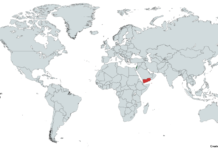This week, numerous states across the Great Plains and Midwest are facing the aftermath of severe weather events, including tornadoes that have wreaked havoc on communities and infrastructure, leaving thousands without power. As these regions brace for further adverse conditions, the National Weather Service (NWS) is actively working to assess the damage and confirm reports of tornadoes from recent storms.
The severity of the weather was evident early in the week when the NWS confirmed multiple tornadoes across various states, including Michigan, where Governor Gretchen Whitmer declared a state of emergency in four counties following the storms. In Oklahoma, an EF3 tornado inflicted severe damage on the small city of Barnsdall, which had already experienced a similar event earlier in the year.
Meanwhile, in Ohio, the NWS in Wilmington has been monitoring storm activity, with meteorologist Jim Lott noting detected rotations in counties such as Butler and Warren, as well as southeastern Indiana. These areas have seen their own share of turmoil from the storms, contributing to the broader regional distress.
In Tennessee, the repercussions of the storms have been fatal, with two reported deaths due to the severe conditions. The impact prompted a temporary ground stop at Nashville International Airport and necessitated emergency responses to handle the damage, which included downed power lines and trees.
Health facilities like Maury Regional Health in Tennessee have been managing the influx of casualties. The hospital received several patients, one of whom succumbed to their injuries, while others faced serious conditions.
The forecast suggests that the severe weather will persist, moving through parts of the Southeast and placing more areas under threat. Tornado watches and warnings have stretched into the night across states like North Carolina, Alabama, Georgia, Missouri, and Kentucky, indicating the ongoing risk posed by these powerful storm systems.
In North Carolina, a large storm prompted the declaration of a state of emergency in Gaston County after it caused extensive property damage and claimed a life when a tree fell on a car. This incident underscores the lethal potential of such severe weather conditions.
As communities across the affected states rally to recover from the damage and brace for more storms, the resilience of emergency response efforts and the solidarity among residents have been prominently displayed. People are coming together to clear debris, restore utilities, and support one another in the face of these relentless weather challenges.
The recent spate of tornadoes and severe weather across the U.S. is a stark reminder of the increasing frequency and intensity of such events. From Michigan to Oklahoma and from Ohio to Indiana, the widespread devastation calls for enhanced preparedness and robust emergency response mechanisms to better protect communities and manage the impacts of these formidable natural phenomena.
As the nation continues to grapple with these unpredictable and often devastating weather events, the importance of preparedness, timely response, and community resilience is highlighted, demonstrating the crucial need for strategies that can mitigate the effects of severe weather and safeguard the well-being of the affected populations.
Image is in the public domain.









